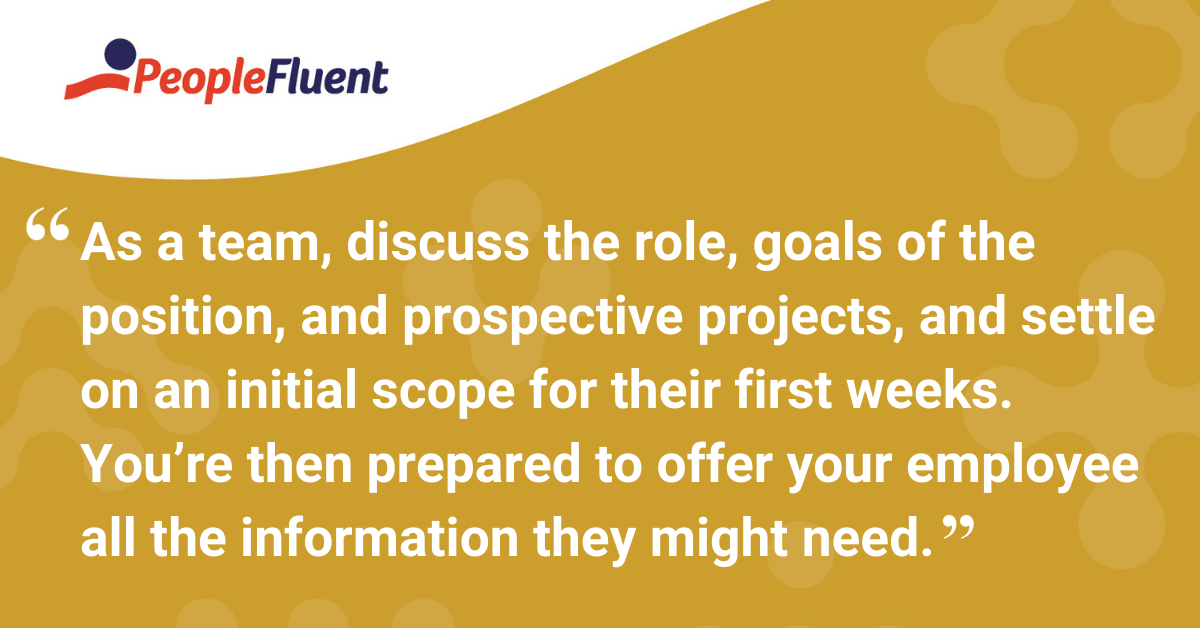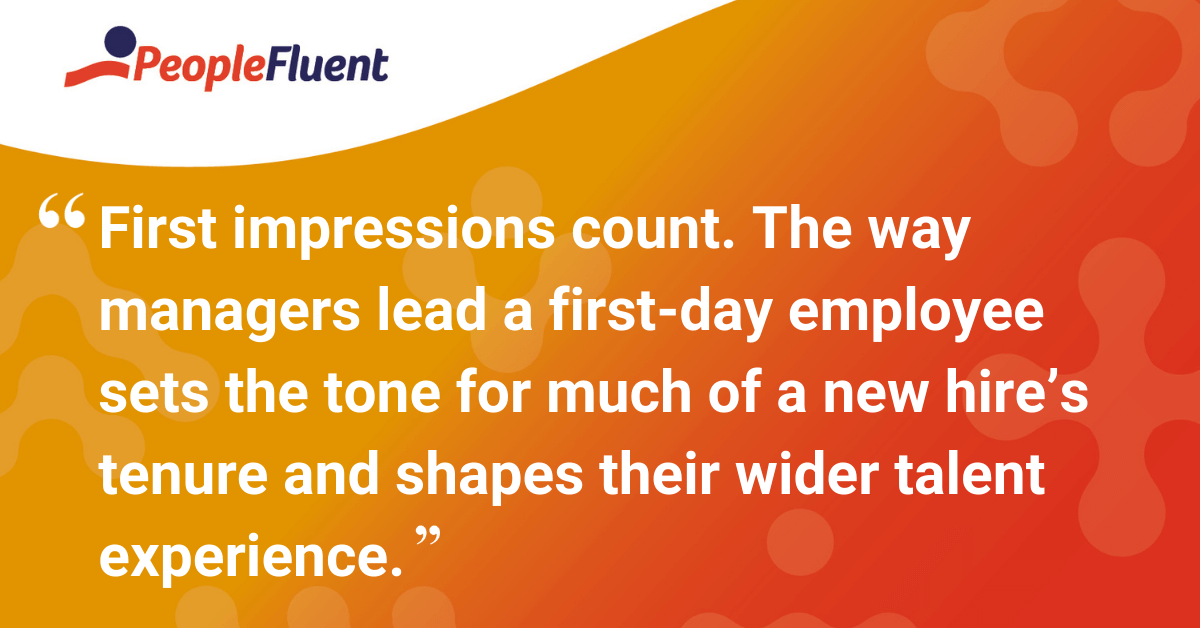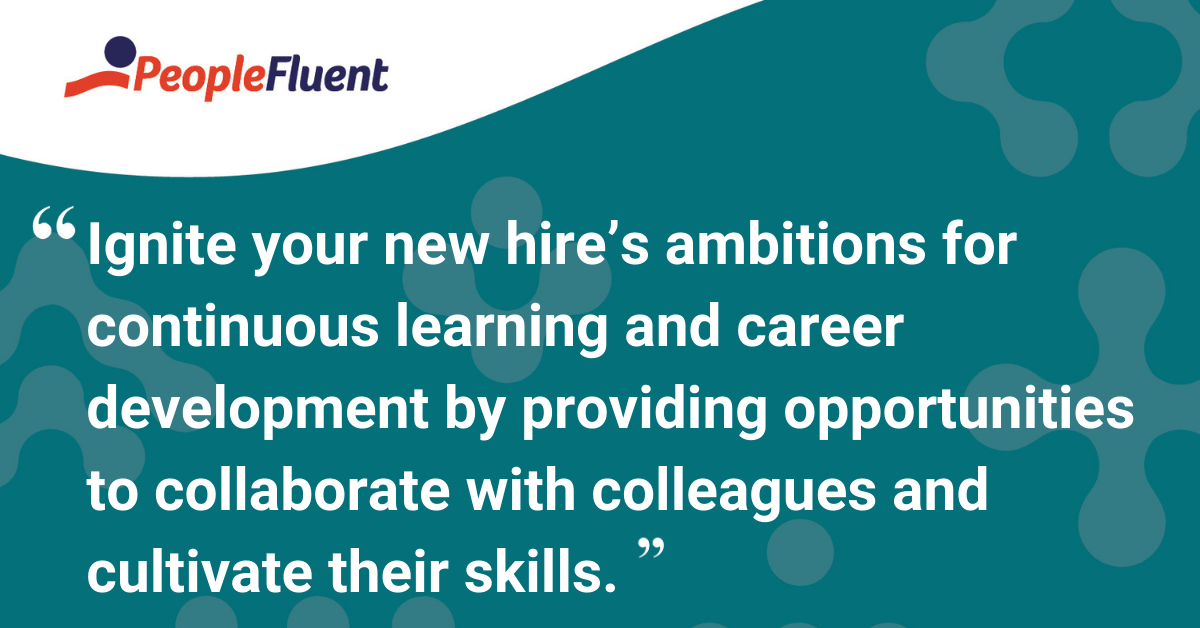Published: Dec 18, 2020Time to read: 9mins Category: Insights
4 Best Practices for Your Onboarding Checklist
A new hire onboarding checklist helps guide your new-starter program and facilitates the employee’s journey. Successful talent acquisition processes decrease turnover rates and improve engagement, productivity, and satisfaction—all of which are powerful influencers of the employee experience. So, here are four best practices to help you get the most from your new hires.
After eons of planning, recruiting candidates, and interviewing top applicants, you’ve triumphed. Finding the perfect candidate for the position means the work is finally over.
Or is it?
Onboarding programs are one of the most influential talent processes impacting new hires. And a thorough checklist will guide your program and facilitate the employee’s journey. HR leaders know that successful employee onboarding processes decrease turnover rates and improve engagement, productivity, and satisfaction—which are powerful influencers of the employee experience.

Successful Programs Begin with an Onboarding Checklist
Onboarding employees should be a continuous process, with the best programs lasting at least 90 days or beyond. A checklist can help keep the process on track and guide the onboarding experience.
For the ideal outcome—that is, employees who are aware of and committed to your corporate culture and business needs—leaders need to be engaged in the onboarding process. Yet managers all too often find themselves explaining the importance of a well-structured program to decision-makers. And stressing that it shouldn’t be underestimated.
Managers must emphasize that investing in quality employee orientation upfront saves the entire organization time and resources in the long term. Unite leaders and managers in developing a thoughtful checklist for new starters, bearing in mind that each one may need to be tailored to the individual hire.
Related reading: ‘Preparing Employees to Run on Your Fast Track: 10 Onboarding Best Practices’
1) Prepare Your Team and New Hire for Day One
You’ve conquered the candidate experience. Your organization’s attractive employer brand and smooth interview process won over your top recruit. However, good employee onboarding actually begins before the first day. Once they accept the offer, their onboarding experience is defined by the talent journey that follows.
Top-quality people tend to value punctuality, organization, and hospitality. So, preparation for the first day will have a lasting effect on teams and their new hires.
Expert Tips for Success
- Address administrative tasks. HR forms can be a bore, but ensuring all team members complete required items mitigates the risk of non-compliance.
This includes providing new hires with tax forms and benefits paperwork. Also confirm their accounts, workstation, equipment, and access to software are arranged.
- Flesh out initial responsibilities and assignments. A candidate’s initial impression of the position is in reading the job ad. Intended to attract applicants, it likely doesn’t include the specifics.
As a team, discuss the role, goals of the position, and prospective projects, and settle on an initial scope for their first weeks. You’re then prepared to offer your employee all the information they might need.
- Share the plan with your new hire. Give fresh recruits time to prepare. The opportunity to read, understand, and ask questions about their new position equips them with the insight and ability to defeat common first-day jitters and pressures. And we’ve all been there before.
- Initiate a conversation before they arrive. Maybe they have concerns or anxiety about integrating into a new role. A proactive dialogue can help ease common fears, affirm their choice to accept the offer, and reinforce your employer brand.

You might also like: ‘9 Steps to a Better Onboarding Program’
2) Acclimate Your New Employee
First impressions count. The way managers lead a first-day employee sets the tone for much of a new hire’s tenure and shapes their wider talent experience. So what does the first day look like?
Expert Tips for Success
- Distribute a new hire packet. Elements should include training materials, internal resources (for example, contacts, employee handbook, org charts, etc.), and information about the company’s mission and offerings. This new-hire packet can be developed with remote and in-person workforces in mind. Therefore, it should include similar elements to be used for both situations, as well as elements respective to remote and in-person workers.
As part of your in-person onboarding checklist, print a personalized welcome letter to make them feel appreciated—bonus points for sending an introduction email to the department. For remote workers, a personalized welcome letter can be delivered via email or postal service, keeping in mind that the latter may take longer for global employees to receive.
- Lead an office tour if possible. The first day on the job can be disorienting for many people. To help overcome this, begin by familiarizing your new hire with the office and facilities, introducing them to other team members along the way.
They likely won’t remember everyone and everything, but taking the time to show them around sends a powerful message to new hires. This can still be achieved for remote workers, in the form of a ‘virtual office tour’ where other employees can join in and welcome the new colleague.
- Explain short-term expectations. The manager’s expectations (and the employee’s, too) will evolve as they settle into their new role. Establishing guidelines in the interim gives them a starting point from which to work.
- Assign their first project. As they adjust to expectations and responsibilities, it’s imperative to avoid overwhelming new hires on day one.
It’s tempting to just get down to business, but assigning manageable tasks or a quick-win project will help integrate them into the team and a work routine. And achievable milestones will keep them on track.
- Seek first-day feedback. End the first day by asking what went well and what could have been better. Invite them to ask outstanding questions or express any concerns, too.
Prioritizing their needs from the get-go conveys respect and strengthens your employee value proposition.

More from the blog: ‘How Talent Experience Benefits Employee and Employer’
3) Provide Your Recruit with a Mentor… or Two
During their first week, managers should spend quality time helping employees get settled into the new role. Connect with them to show that leaders and other managers are invested in their success and the overall workplace culture.
The right peers have tools that are instrumental to a new hire’s well-being and overall employee experience. This is also important for diversity and inclusion efforts as employees who find themselves surrounded by peers who look like them, or come from similar backgrounds, are more likely to engage with the culture.
You might be wondering, who’s part of a resourceful cohort of peers? And how can managers engage them?
Expert Tips for Success
- Schedule a team lunch. Gathering for a meal outside of the work environment allows new hires to feel comfortable getting to know their peers and boosts employee morale. Seasoned team members serve as valuable resources as a new employee assimilates to the team’s cadence and company culture.
- Plan one-on-one introductions. For colleagues, they’ll work with on a regular basis, set up introductory meetings during the first week. Perhaps one or more of their colleagues can offer some great insight.
- Engage a mentor. A traditional mentorship framework between supervisors and direct reports is encouraged. New employees will gain even more value when able to seek mentoring relationships outside of their reporting structure.
Ignite your new hire’s ambitions for continuous learning and career development by providing opportunities to collaborate with colleagues and cultivate their skills.

Hand-picked for you: ‘The Four Es: Your Fast Lane to Continuous Learning’
4) Develop a Plan to Grow Your New Hire
The best onboarding programs exceed compliance. This sends an unmistakable message that a new hire will be able to grow professionally in their position and at the organization. Throughout their first 90 days, demonstrate that everyone’s invested in their success.
Not only will this increase employee retention across the board, you’ll also deepen engagement. Growth and career development are sure strategies for retaining talent.
What does an employee growth plan encompass?
Expert Tips for Success
- Schedule regular check-ins. Have genuine conversations about how your employee is adjusting to their role beyond a hasty ‘How are you?’. Keep it informal, listen actively, and discuss short-term and long-term goals to build trust.
- Maintain a career development dialogue. Do you know about their interests and career aspirations? Talk about their desired career journey—collaborate on steps to achieve goals and offer professional development opportunities.
- Encourage networking and collaboration. Learn their preferences for professional relationship-building and social connection with their team. Supporting camaraderie between peers fuels employee wellness, fosters a sense of community, and enhances intrinsic employee motivation.
- Provide consistent feedback. Diverse and frequent employee performance appraisals increase productivity and motivation, and gives employees the tools to turn feedback into achievable improvement.
Positive feedback loops are not only critical to engagement and workplace satisfaction, but also emphasize honesty and authenticity.
- Review their onboarding experience. Ask for comments on the positive and negative aspects of their onboarding process. How did their experience influence their work? Use this feedback to inform enhancements to your new-starter program in the future.
You can also prompt them to share their story of joining the company, which you can showcase to future hires and help build your employer brand.
Stand Out with a Stellar Onboarding Experience
If all this sounds like work, that’s because it is! Getting onboarding right demands forethought, preparation, engaged and enthusiastic managers, and smart HR systems to help make it all happen.
But the payoff is huge. When employees are effectively onboarded, they work harder, increase discretionary effort, and are less likely to leave the company.
The impact of a stellar onboarding program compounds with each new hire, creating a virtuous cycle of engagement that will enable your organization to stand out as an employer of choice.
Editor’s note: This article was previously published in February 2018 and has been updated with the most recent information.